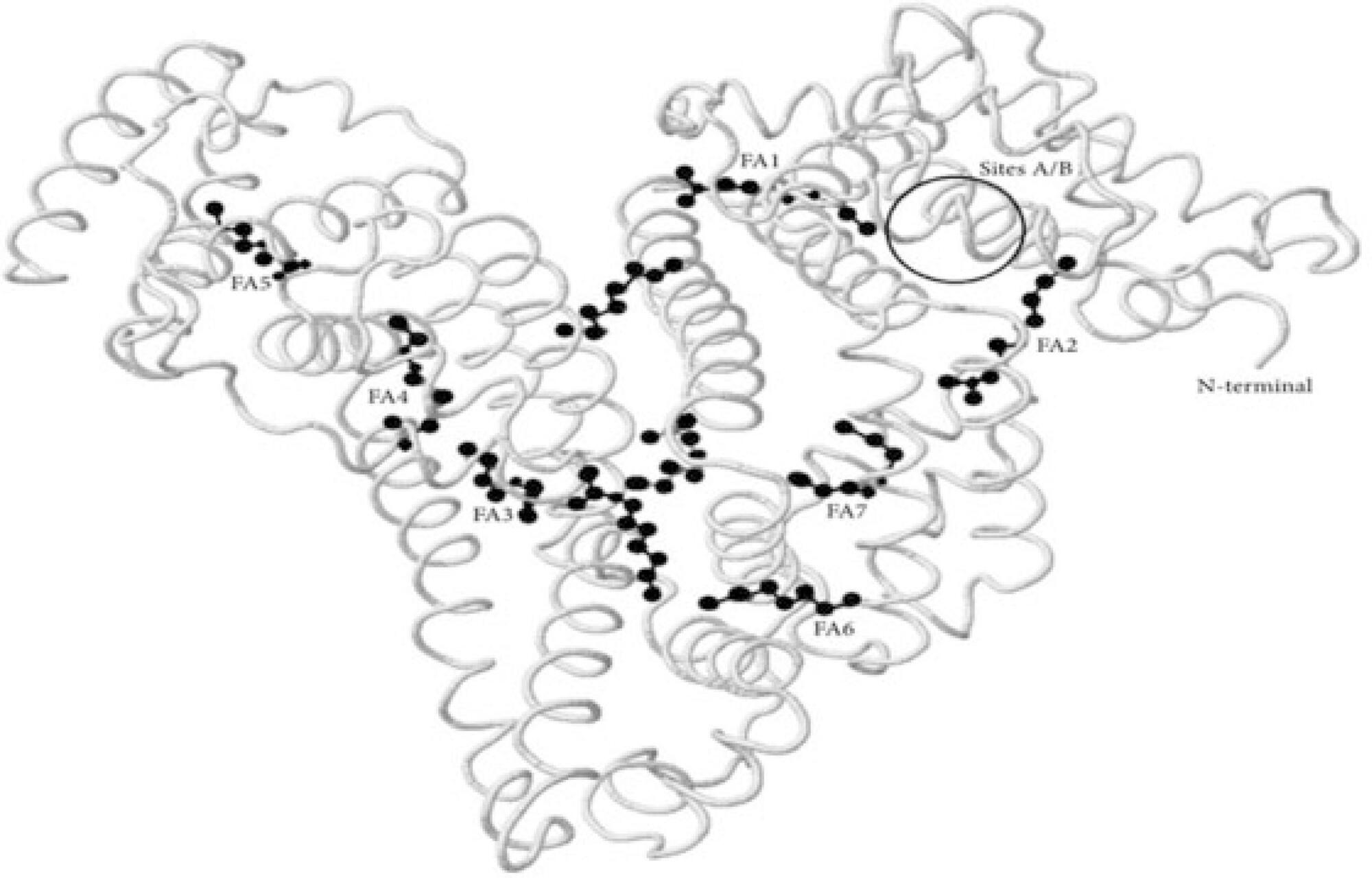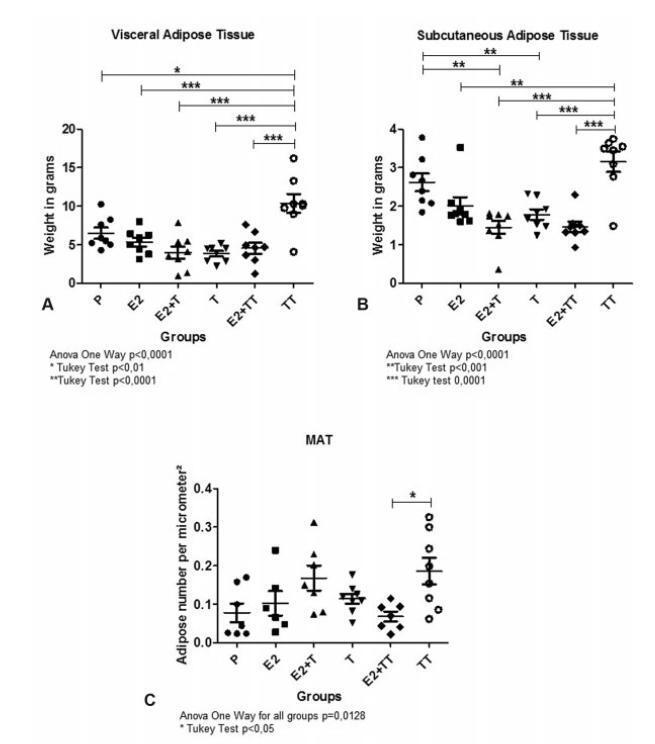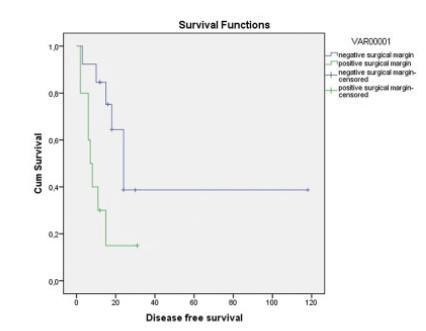Summary
Revista Brasileira de Ginecologia e Obstetrícia. 2020;42(3):133-139
Ischemia-modified albumin (IMA)is a modified type of albumin protein that is formed under oxidative stress. This study aims to compare the levels of serum IMA between normotensive and preeclamptic pregnancies and to evaluate the relationship between the severity of the disease.
A total of 90 pregnant women aged between 18 and 45 years participated in this cross-sectional study. The levels of serum IMA were measured by enzyme-linked immunosorbent assay in 30 preeclamptic pregnant women with the severe signs of the disease, 30 preeclamptic pregnant women, and 30 normotensive pregnant women.. The study was designed as a cross-sectional clinical study.
When the demographic characteristics were examined, statistically significant differences were found between the groups in terms of age, gestational week at birth and blood pressure. Age was higher in the preeclampsia with signs of severity group than in the normotensive group (p = 0.033). Pregnancy week was significantly the lowest in the preeclampsia with the severity signs group (p = 0.004). In normotensive patients, IMA levels were lower than in the preeclampsia groups (p = 0.001) but there was no significant difference in terms of severity of disease (p = 0.191). According to laboratory data; only the creatinine level was significantly different between the groups.
The levels of serum IMA were higher in patients with preeclampsia than in healthy pregnancies. However, there was no significant correlation in terms of preeclampsia severity; more extensive, prospective and long-term studies are needed.

Summary
Revista Brasileira de Ginecologia e Obstetrícia. 2020;42(3):124-132
To assess the use of the intensive care unit (ICU) and its effect on maternal mortality (MM) among women with severe maternal morbidity (SMM).
A secondary analysis of a cross-sectional study on surveillance of SMM in 27 Brazilian obstetric referral centers. The analysis focused on the association between ICU use and maternal death according to individual characteristics and disease severity. Two multivariate regressions considering use of the ICU, age, ethnicity, adequacy of care and the human development index were performed to identify the factors associated to maternal death and maternal near-miss.
Out of 82,388 deliveries during the period, there were 9,555 (11.6%) women with SMM, and the MM ratio was of 170.4/100 thousand live births. In total, 8,135 (85.1%) patients were managed in facilities in which ICUs were available; however, only 2,059 (25.3%) had been admitted to the ICU. On the multivariate analysis, when the severity of the maternal disease was measured by the maternal severity score (MMS), the strength of the association between the use of the ICU and maternal death was greatly reduced, along with inadequate care and non-availability of the ICU at the facility. On the assessment of only the more critical cases (SMO, severe maternal outcome), the same pattern of association between ICU and MM was observed. In the models used, only inadequate care and MSS were significantly associated with MM.
The current study indicates that the main variables associated with maternal death are the severity and adequacy of the case management, which is more frequent in ICU admissions. The use of the ICU without the stratification of the patients by severity may not produce the expected benefits for part of the women.
Summary
Revista Brasileira de Ginecologia e Obstetrícia. 2020;42(3):152-159
To analyze the interobserver and intraobserver reproducibility of the visualization and continuity of the juncional zone (JZ) by three-dimensional (3D) ultrasound in infertile women, and to evaluate the sociodemographic, hormonal, and structural factors that influence these assessments.
A prospective study conducted at the Assisted Reproductive Technology Unit of Hospital Senhora da Oliveira, in the city of Guimarães, Portugal. Transvaginal 3D ultrasonography was performed, and 2 volumes were generated per case. Two observers who were blinded to each other's work analyzed these volumes, choosing the best coronal section. Four months later, one of the observers performed the same methodology. The JZ visualization was classified as optimal, satisfactory, and unsatisfactory, and the JZ continuity, as continuous and discontinuous. The interobserver and intraobserver agreements were analyzed. The influence of hormonal, structural, and sociodemographic factors on the JZ was evaluated.
In total, 65 women were included in the present study. The interobserver reproducibility was substantial for JZ visualization and continuity (k = 0.635 and 0.753 respectively), and the intraobserver reproducibility was very good for JZ visualization and continuity (k = 0.884 and 0.816 respectively). Trilaminar endometrial pattern was associated with optimal JZ visualization (p = 0.012). The increase of 1 unit in the level of serum estradiol represents a 9.9% decrease in the odds of unsatisfactory visualization of the JZ (odds ratio [OR] = 0.9; 95% confidence interval [95%CI] = 0.814–0.996; p = 0.042). Endometriosis increases the odds of unsatisfactory visualization by 24 times (OR = 23.7; 95%CI = 1.262–437.057; p = 0.034). The prevalence of discontinuous JZs was of 60%. Myomas and endometriosis were associated with discontinuous JZs (p = 0.034 and 0.016 respectively).
The assessment of JZ visualization and continuity by 3D ultrasound is reproducible enough to be used in the clinical practice.

Summary
Revista Brasileira de Ginecologia e Obstetrícia. 2020;42(3):146-151
To investigate the association between genetic polymorphisms in candidate genes or candidate regions and the development of endometriosis in Brazilian women.
A total of 30 women between 25 and 64 years old with a diagnosis of endometriosis participated in the present study, as well as 30 matched control women from the same age group, asymptomatic and without family history of the disease. The patients genotypic and allelic frequencies of polymorphisms in the GREB1 gene (rs13394619) and in the intergenic region at position 7p15.2 (rs12700667) were analyzed and compared.
There was no significant difference in the frequency of genotypes for the A > G polymorphism (rs13394619) in the GREB1 gene between the two groups. However, the distribution frequencies of the genotypes for the A > G polymorphism (rs12700667) in an intergenic region on chromosome 7 were different for control patients and for patients with endometriosis, with higher frequency of the AG genotype compared to the GG between patients with the disease (odds ratio [OR] = 3.49; confidence interval [CI] = 1.47–8.26).
The present study suggests that the polymorphism in the intergenic region of chromosome 7 is associated with the risk of developing endometriosis in a population of Brazilian women from Juiz de Fora.
Summary
Revista Brasileira de Ginecologia e Obstetrícia. 2020;42(3):140-145
To describe the referral for colposcopy in a Hospital in Brazil and the relative frequency of patients who benefited from it, considering the correct indications for the examination and its final diagnoses.
A retrospective study was performed in the colposcopy service database of the Hospital Universitário de Taubaté, Taubaté, state of São Paulo, Brazil. The frequency validated in the analysis of the medical records of women referred for clinical indication or cytological alteration, attended from March 2015 to March 2017. The population selected and analyzed included 256 results that were correlated to the cytological, clinical data and the result of the colposcopy.
Of the women referred, 45% presented out of the age of screening according to the guidelines of cervical cancer screening, 8.6% being adolescents and young adults < 25 years old, and 36.4% of the patients being ≥ 65 years old. A total of 50% of the patients had no indication of colposcopy, that is, normal cytologies, benign changes, ectopia, cervicitis, atypical squamous cells of indeterminate significance (ASC-US) and low-grade intraepithelial lesion (LSIL) without persistence and normal clinical appearance. A total of 39.84% who underwent colposcopy had high-grade lesion or cancer results, thus benefiting from the adequate referral.
Most (60.16%) of the patients referred to the colposcopy service did not benefit from the referral for results without changes, such as negative colposcopies, histologies with no cervical intraepithelial neoplasm (CIN) or only CIN 1, or were out of the age for screening. These findings therefore demonstrate a significant number of unnecessary and inadequate referrals.
Summary
Revista Brasileira de Ginecologia e Obstetrícia. 2020;42(1):5-11
Estimate the prevalence of human herpesvirus type 1 HSV-1 DNA in placental samples, its incidence in umbilical cord blood of newborns and the associated risk factors.
Placental biopsies and umbilical cord blood were analyzed, totaling 480 samples, from asymptomatic parturients and their newborns at a University Hospital. Nested polymerase chain reaction (PCR) and gene sequencingwere used to identify the virus; odds ratio (OR) and relative risk (RR) were performed to compare risk factors associated with this condition.
The prevalence of HSV-1 DNA in placental samples was 37.5%, and the incidence in cord blood was 27.5%. Hematogenous transplacental route was identified in 61.4% from HSV-1+ samples of umbilical cord blood paired with the placental tissue. No evidence of the virus was observed in the remaining 38.6% of placental tissues, suggesting an ascendant infection from the genital tract, without replication in the placental tissue, resulting in intra-amniotic infection and vertical transmission, seen by the virus in the cord blood. The lack of condom use increased the risk of finding HSV-1 in the placenta and umbilical cord blood.
The occurrence of HSV-1 DNA in the placenta and in cord blood found suggests vertical transmission from asymptomatic pregnant women to the fetus.
Summary
Revista Brasileira de Ginecologia e Obstetrícia. 2020;42(1):43-50
The present article aims to evaluate the impact of testosterone treatment on the expansion of visceral, subcutaneous and intramedullary adipose tissue of ovariectomized rats and the visceral and subcutaneous fat expression of peroxisome proliferator-activated receptors (PPARs) gamma.
In total 48 female Wistar rats were castrated and randomly divided into 6 treatment groups: group E2 was submitted to estradiol 5 μg/day; group T, to testosterone 5 μg/day; group E2+ T, to estradiol 5 μg/day + testosterone 5 μg/day; group TT, to testosterone 30 μg/day; group E2+ TT, to estradiol 5 μg/day+ testosterone 30 μg/day; and placebo was administered to group P. After 5 weeks, the rats were euthanized, the inguinal and visceral adipose tissues were harvested, weighted, and had their PPAR gamma expression evaluated by reverse transcription quantitative polymerase chain reaction (RTqPCR). The right femurs were harvested and histologically prepared to performthe number count of the intramedullary adipocytes.
The expansion of visceral fat tissue was much higher in the TT group when compared with other treated groups (p < 0.001). The TT group also showed a higher expansion of inguinal fat (p < 0.01), and groups E2 +T and E2+ TT presented lower growth compared to the P group (p < 0.01). The number of femur intramedullary adipocytes only showed significant differences between groups TT and E2 + TT (p < 0.05). The expression of PPAR gamma showed no differences among the groups.
The use of testosterone in high doses leads to an important expansion in both visceral and inguinal adipose tissues. Association with estradiol exerts an expansion-repressive effect on the visceral and inguinal adipose tissues.

Summary
Revista Brasileira de Ginecologia e Obstetrícia. 2020;42(1):35-42
To evaluate the outcomes of surgical treatment in patients with chemoradiotherapy (CRT)-resistant and locally advanced cervical cancer (LACC).
Patients with LACC who underwent surgery due to resistance to CRT between 2005 and 2015 were reviewed retrospectively. Disease-free survival (DFS) and overall survival (OS) related factors were analyzed.
A total of 23 patients were included in the study and the median age was 51 years old. A total of 14 patients (60.8%) experienced recurrence; among these recurrences, 8 of them were local, 5 were distant, 1 was both distant and local. A total of 9 patients (39%) died. The Median DFS and OS durations were 15 and 32 months, respectively. A total of 17 patients (74%) had undergone simple hysterectomy, 4 (17%) radical hysterectomy, and 2 (9%) total pelvic exenteration. Postoperative grade 3 and 4 complications were seen in 12 patients (52%). Macroscopic tumor presence in the pathology specimen was associated with distant recurrence and positive surgical margins with local recurrence (Log-Rank test p = 0.029 and p = 0.048, respectively). The only factor associated with OS was surgical margin positivity (Log-Rank test p = 0.008). The type of surgery, grades 3 and 4 postoperative complications, brachytherapy, and tumor histology were not associated with recurrence.
In patients with LACC, hysterectomy is an option in the presence of a central residual tumor after CRT. However, the risk of grades 3 and 4 complications of performed surgery is high. The presence of macroscopic tumor in the pathology specimen and positive surgical margins are poor prognostic factors. The goal of the surgeon should be to achieve a negative surgical margin. It does not seem important if the surgery is simple or radical.
